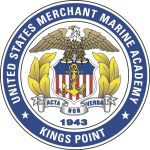News
The Importance of the U.S. Military Sealift
This timely Stars & Stripes article highlights the importance of America’s military sealift to protecting our nation and the consequences if we are not prepared.
In light of Russia’s logistical failures in its invasion of Ukraine, including an inability to supply sufficient fuel to its forces, the Department of Defense is taking a serious look at its sealift capacity and its impact on our ability to supply our troops with weapons, food, fuel, and materiel in a future conflict. As the article notes, the Navy’s nearest fuel depots on U.S. soil (Guam) are about 2,000 miles away from the South China Sea, a logistical challenge that China would not face.
The ships used for military sealift operations are actually U.S.-flag commercial vessels; they are not part of the Navy’s fleet. The key source for the human capital required to operate those vessels is the U.S. Merchant Marine Academy (USMMA), which was founded in 1943 to provide the qualified, federally obligated Merchant Marine officers who execute the sealift aboard these commercial ships.
The USMMA supplies 80 percent of the officers in the U.S. Navy’s Strategic Sealift Officer (SSO) Force. In peacetime, these U.S. Navy-commissioned officers execute training exercises and other activities to ensure strategic sealift readiness––and service-obligated trained leaders––in times of national defense or emergency. USMMA is the only federal academy that educates and graduates licensed Merchant Marine officers.
USMMA is also the only maritime school in which 100 percent of graduates both earn a Merchant Marine license and incur an obligation to serve their country for eight years.
